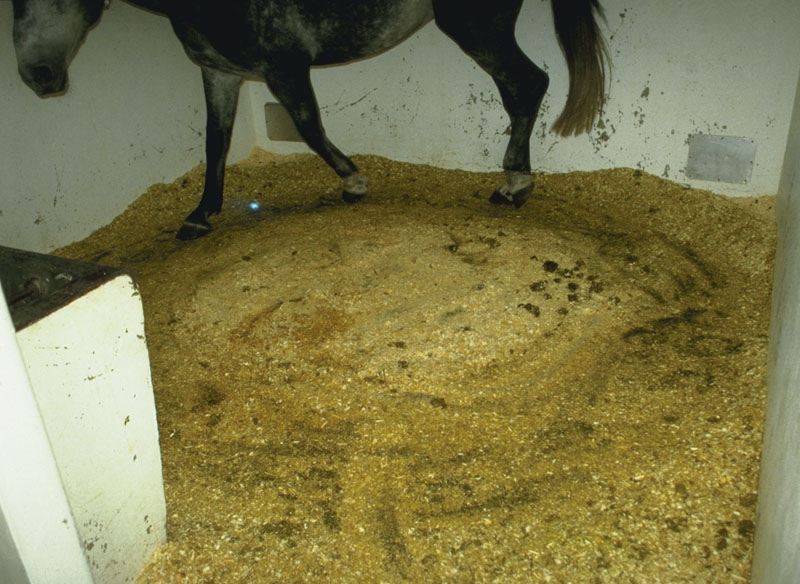Training/Housing
A training routine is decided by the head trainer, who oversees the training of all the horses and maintains relationships with the 'owners' of the horses. Horses are mostly 'worked' early in the morning before sunrise. For most racehorses (unless they are permanently housed at racecourses) this means being trucked to the nearest racetrack to be ridden. Horses are confined to a stable for the remainder of the day; up to 22 hours.
Horses are naturally foraging animals, who like to constantly and selectively graze for the majority of the day30. Being housed in stables prevents horses from expressing their natural behaviours, including socialisation31. This constant confinement leads to many abnormal behaviours in racehorses that present out of boredom and frustration. These include;
Cribbing (wind sucking)
Many horses housed in stables will crib bite. Cribbing is when a horse places their upper teeth on a hard object and sucks in a large amount of air, hence being commonly referred to as wind sucking32. Boredom and stress are often the cause of cribbing33. Horses that have little mental stimulation throughout the day (like a racehorse confined to a stable 22 hours a day) are at high risk of developing this behaviour34. Cribbing also increases the risk of a horse developing colic and stomach ulcers35.
Box walking
Box walking is a repetitive pacing around a stable. This behaviour reflects boredom and frustration in horses that are unable to forage or engage in social behaviour36.

A horse box walking in their stall. Source: Vetstream
Wood chewing
Wood chewing is another behaviour that presents mostly in horses confined to a stable. Horses may wood bite out of boredom or to satisfy their chewing needs due to lack of foraging38. Wood chewing can lead to the ingestion of foreign objects, which in turn has the potential to lead to impaction colic, as well as wearing down of teeth39.
Weaving
Weaving is when a horse walks in place whilst bobbing their head from side to side40. Lack of time spent foraging and visual stimulation have been identified as causes of weaving in horses41.


